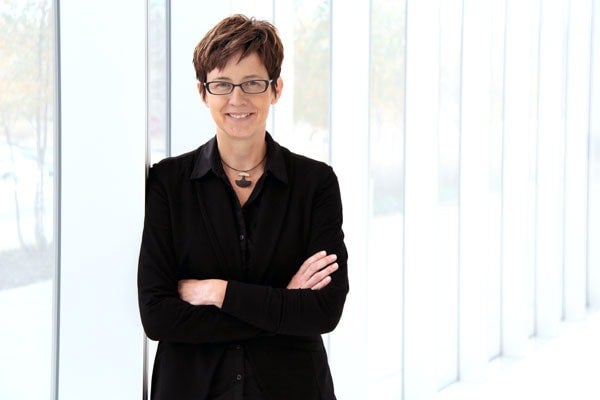
Northern exposure: how this anthropology professor is changing health care in Nunavut
Published: November 24, 2015
In a career that has taken her from an urban intensive care ward to the farthest reaches of Canada, Assistant Professor Tracey Galloway is helping to change the delivery of health care in Canada’s icy north.
Before earning a PhD in anthropology, Galloway spent nearly a decade working 12-hour shifts in the intensive care ward of a London, Ontario hospital where she saw the same patients admitted over and over. They suffered from chronic ailments, like diabetes or heart disease, and many were also coping with poverty, poor nutrition and marginalization.
“I kept seeing people who had fewer resources do less well in the ICU setting,” Galloway says. "I wanted to explore why those patterns exist in our population, and how we could use policy and programs to provide service for marginalized people more effectively."
That curiosity led Galloway to a career in anthropology, including a post-doctoral position at the Dalla Lana School of Public Health. “I took a step back from hands-on work to try and effect change for a greater number of people,” Galloway says. “I wanted to understand the backdrop against which those critical illnesses emerged.”
Galloway, who joined the University of Toronto Mississauga's anthropology department in July, was awarded funding from the Canadian Institutes of Health Research to investigate how cancer care is delivered to residents in Inuit communities. Over the three-year study, the team will collect stories from 10 families who have experienced cancer, and use the information to improve processes and supports.
In the north, relationships have a unique and important role, which is reflected in both the collection of data and the way it will be presented. Field interviews will be conducted by Lily Amagoalik, one of the first graduates of the Nunavut nursing program. She is fluent in many dialects of Inuktitut and has deep roots in northern communities.
Galloway’s team will use two methods to analyze responses – traditional Western-style content analysis, and a groundbreaking Inuit epistemology called “Piliriqatigiinniq.” Translated, it means “working in a collaborative way for the common good” and reflects traditional Inuit values around relational knowledge creation.
For northern residents, the experience of chronic disease takes place in a very different context than the one southern Canadians experience, Galloway says. Twenty-five small communities are spread across Nunavut’s vast expanse of land, making it challenging to deliver health care close to home. For diagnosis and treatment, residents with serious health issues must travel to southern care referral centres in Yellowknife, Edmonton, Winnipeg, Ottawa and Montreal.
“That necessitates lengthy travel when people are facing critical choices about their diagnosis and care, absence from family and a lot of health issues back in the community for worried family members,” she says.
Galloway’s team will work closely with the Nunavut Department of Health, Qaujigiartiit Health Research Centre and Nunavut Tunngavik Incorporated with the goal of improving health care access and support programs.
“We’ll be asking people to share their experiences—what parts were positive, what supports could have made a better experience at home or in the referral centres in the south,” she says. “What worked, what didn’t, what could be done better?”
The team will collect similar data in a related end-of-life care study, initiated by Arviat Elders.
“Many people die from chronic diseases while they’re in treatment in the south and away from family members,” Galloway says. The team will collect information about the supports available to patients and families. Health care agencies will use that data to improve pain management, end-of-life care, family supports and advanced care directives.
“If someone has reached the terminal stage, how do we plan for their care in the referral centre and at home? Some of those recommendations will be practical tools, such as improving forms and processes.”
Galloway says she sometimes misses the hands-on work of nursing, but sees greater impact in long-range research and health care planning.
“I work with change makers, gathering information and delivering it in a package that they can make the most use of,” she says. “At any moment, there is some elderly Inuit person in a treatment centre, who would rather be sitting on the floor, but is forced to sit in a chair and listen to a strange doctor tell them that they might die far from home. We have to make those experiences better.”



